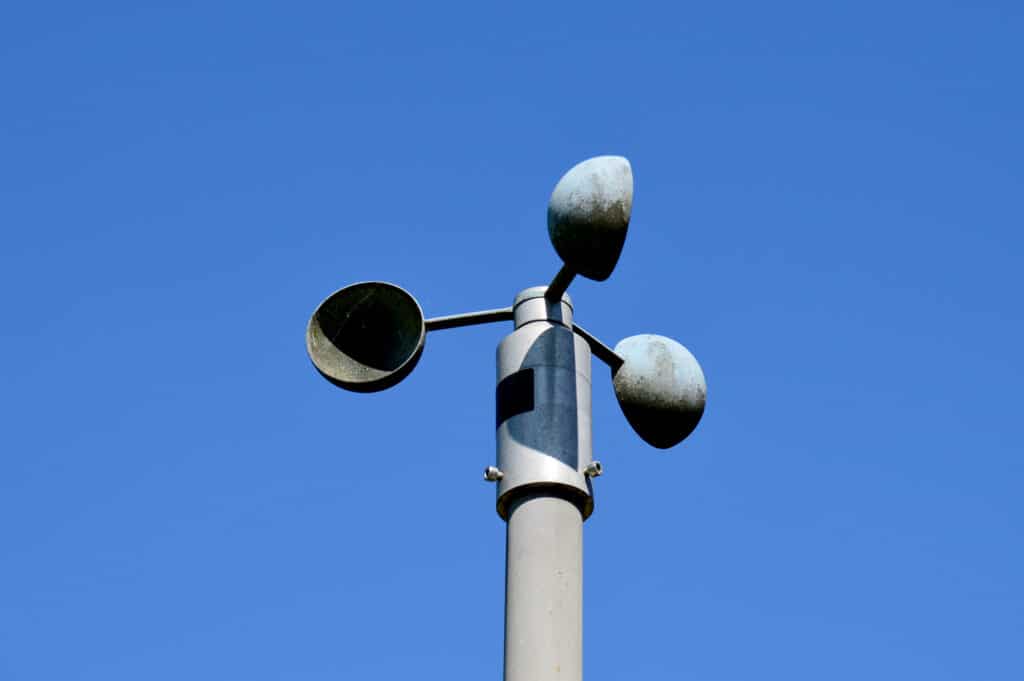The Duty of an Anemometer in Improving Safety for Outdoor Activities
The Duty of an Anemometer in Improving Safety for Outdoor Activities
Blog Article
Anemometers Revealed: Understanding Their Relevance in Environmental Tracking and Security Procedures
The function of anemometers in ecological surveillance and safety and security actions is frequently ignored, yet their value is obvious. These tools have a long history rooted in scientific query and technological advancements, evolving to come to be crucial tools in numerous areas. From meteorology to air travel security, anemometers play an essential function in providing exact information that informs decision-making procedures and boosts total security. Recognizing the details of anemometers unveils a globe of crucial insights that are fundamental to our understanding of the environment and the steps we take to guarantee safety.
Background of Anemometers
The evolution of anemometers can be traced back to the ancient civilizations where fundamental wind gauging gadgets were initial used. One of the earliest known anemometers was the hemispherical cup anemometer designed by Leon Battista Alberti in the 15th century.
In the 18th century, the distinguished researcher John Thomas Romney Robinson presented the Robinson anemometer, which included four hemispherical mugs mounted on horizontal arms that prolonged from a central axis. This layout became a requirement in atmospheric measurements as a result of its accuracy and reliability. Throughout the years, improvements in modern technology brought about the development of more modern anemometers, including ultrasonic anemometers and laser Doppler anemometers, providing increased precision and efficiency in determining wind speed and direction. The background of anemometers showcases a remarkable journey of development and progress in the field of weather forecasting.
Kinds Of Anemometers
Throughout the field of meteorology, numerous sorts of anemometers have been developed to properly determine wind rate and direction. The most usual type is the cup anemometer, which contains 3 or four cups installed on straight arms that turn with the wind. As the cups rotate, the speed at which they rotate is straight proportional to the wind speed. One more widely made use of kind is the vane anemometer, which includes a tail or fin that straightens itself with the wind instructions. This placement enables the tool to figure out the wind direction. Sonic anemometers use ultrasonic signals to measure wind speed and direction accurately. They are generally made use of in research applications as a result of their high precision. Hot-wire anemometers operate based on the concept that the cooling effect of wind on a warmed wire is proportional to the wind rate. These anemometers are appropriate for measuring low wind rates with high accuracy. Each kind of anemometer has its toughness and is chosen based upon the particular needs of the monitoring task handy.
Applications in Meteorology
Having actually reviewed the different sorts of anemometers utilized in meteorology for measuring wind speed and direction, it is vital to explore their functional applications in the area. Anemometers play a crucial role in meteorology by giving real-time and accurate information on wind problems (anemometer). Meteorologists make use of anemometers to keep track of wind speed and direction to forecast weather condition patterns, problem cautions for severe climate occasions like typhoons, tornadoes, and storms, and analyze atmospheric problems for aeronautics security
In meteorology, anemometers aid in understanding regional and regional wind patterns, which are important for predicting weather changes and determining weather patterns. These gadgets are likewise used in study to examine microclimates, metropolitan warmth islands, and air pollution diffusion. Click This Link Furthermore, anemometers are employed in farming to maximize plant administration practices, such as watering and pesticide application, based upon wind problems.
Importance in Aeronautics Safety
An integral facet of ensuring aviation security hinges on the meticulous tracking of wind conditions using anemometers. Anemometers play an essential duty in air travel by offering real-time data on wind speed and instructions, aiding pilots in making educated choices during touchdown, take-off, and trip. Unforeseeable and strong winds can navigate to these guys dramatically impact aircraft operations, making it vital for aeronautics authorities to depend on exact wind dimensions to guarantee the safety of travelers and staff.

In the vibrant atmosphere of aeronautics, where also small adjustments in wind speed and instructions can have profound results, anemometers stand as vital tools for advertising safe and risk-free air travel.
Function in Environmental Study
Anemometers play an important function in ecological research study by giving vital information on wind i was reading this rate and instructions. By precisely determining wind attributes, anemometers aid scientists examine the activity of toxins in the air, evaluate the effect of industrial discharges, and predict the spread of contaminants in the environment.


Final Thought
In final thought, anemometers have played a crucial duty in environmental monitoring and security measures. Recognizing the importance of anemometers is important for properly gauging wind rate and direction, which is vital for forecasting weather patterns, making sure secure aeronautics procedures, and carrying out ecological research studies.
One of the earliest known anemometers was the hemispherical mug anemometer invented by Leon Battista Alberti in the 15th century. Over the years, innovations in innovation led to the growth of even more modern anemometers, consisting of ultrasonic anemometers and laser Doppler anemometers, offering boosted accuracy and effectiveness in gauging wind rate and instructions. Hot-wire anemometers operate based on the concept that the cooling result of wind on a heated cable is symmetrical to the wind speed. Meteorologists utilize anemometers to check wind speed and direction to anticipate weather patterns, concern warnings for severe weather events like hurricanes, hurricanes, and storms, and assess atmospheric problems for aeronautics safety and security.
Understanding the importance of anemometers is necessary for accurately measuring wind speed and direction, which is important for anticipating climate patterns, making sure secure aeronautics procedures, and performing ecological studies. (anemometer)
Report this page